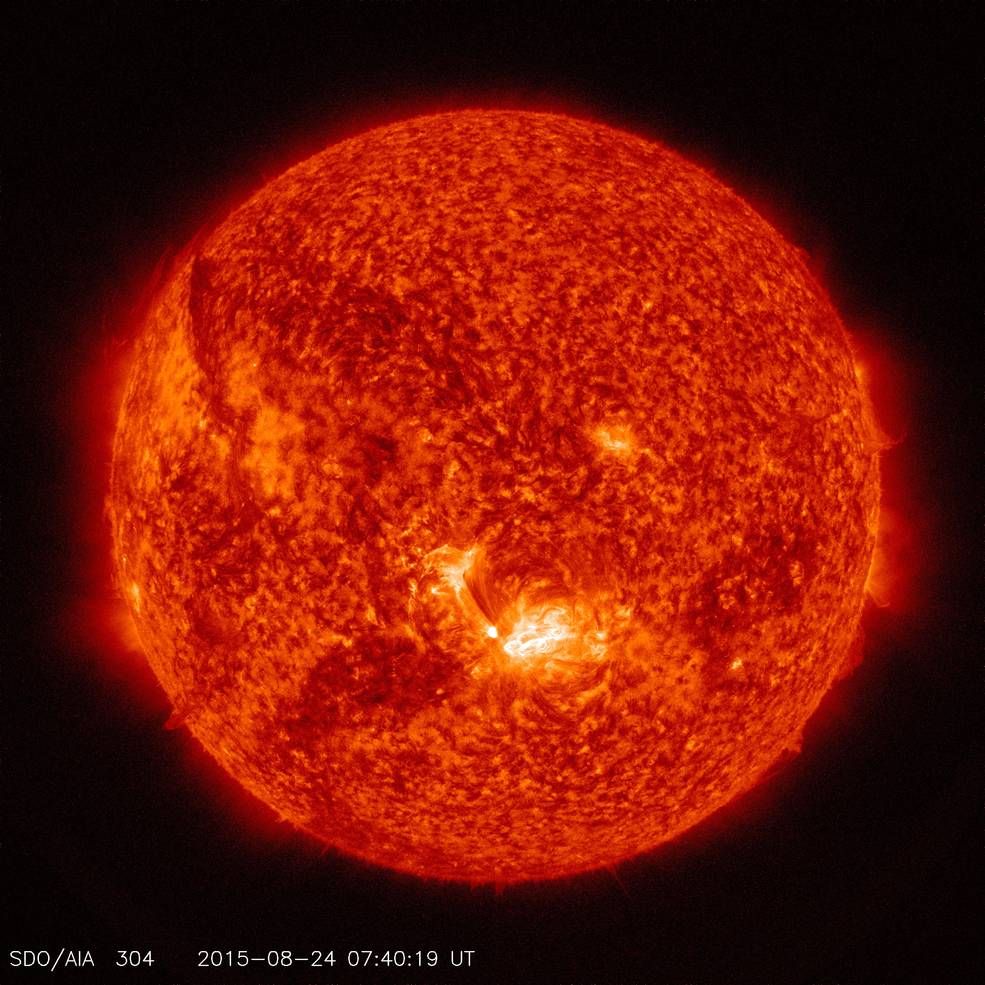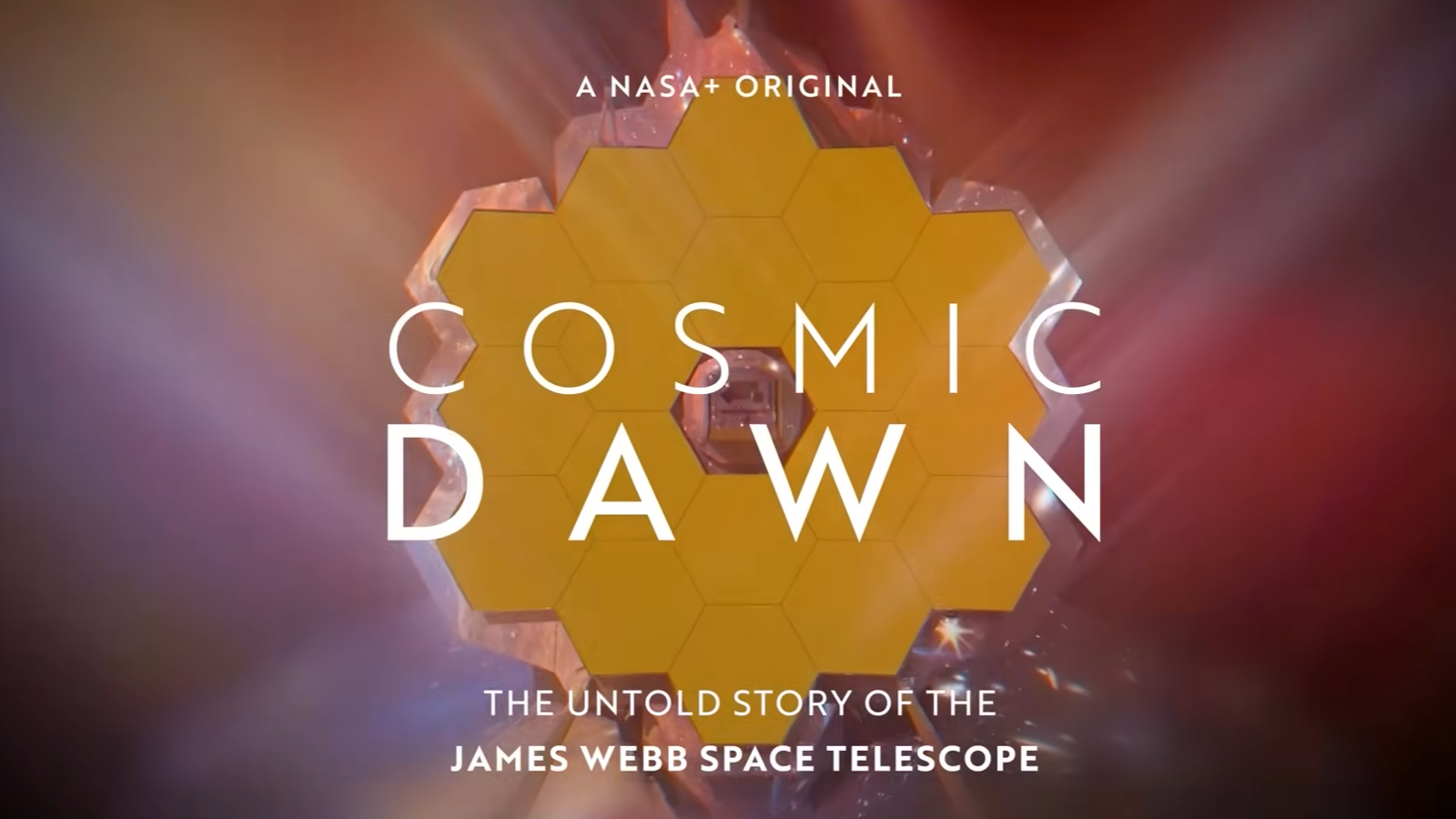
The sun fired off a midlevel solar flare early this morning (Aug. 24) while a NASA satellite watched.
The space agency's Solar Dynamics Observatory (SDO) captured an image of the flare, which erupted at 3:33 a.m. EDT (0733 GMT) this morning from an Earth-facing sunspot known as Active Region 2403.
Space-weather researchers classify strong flares into three categories — C, M or X. X flares are 10 times more powerful than M flares, which in turn are 10 times more intense than C eruptions. This morning's outburst registered as an M5.6, NASA scientists said. (An M5 flare is five times more powerful than an M1.) [The Biggest Solar Storms of 2015 in Photos]
Solar flares are bursts of high-energy radiation that cannot get through Earth's atmosphere to affect people on the ground. However, extremely powerful flares can have impacts higher up, triggering temporary radio blackouts and radiation storms that could endanger orbiting astronauts.
Flares are often accompanied by explosions of superheated solar plasma called coronal mass ejections (CMEs). Potent CMEs that hit Earth can spawn geomagnetic storms powerful enough to disrupt radio signals, GPS communications and power grids. CMEs also often supercharge the beautiful auroral displays known as the northern and southern lights.
It's unclear at the moment if this morning's eruption produced a CME, said researchers with the Space Weather Prediction Center (SWPC), which is run by the United States' National Oceanic and Atmospheric Administration.
SWPC scientists said they'll know more after they analyze data from the Solar and Heliospheric Observatory (SOHO), a sun-studying spacecraft operated jointly by NASA and the European Space Agency.
Get the Space.com Newsletter
Breaking space news, the latest updates on rocket launches, skywatching events and more!

"Although this flare is bigger than we have seen in some time, it was very impulsive and lacked typical radio signatures that are often associated with CMEs," SWPC researchers wrote in an update today. "We will update as additional data becomes available."
Skywatchers were treated to enhanced auroras over the weekend, thanks to a stream of solar particles, and more sky shows could be in the offiing. Two small CMEs that erupted several days ago could hit the planet today, SWPC scientists said.
Editor's note: If you capture a photo of stunning auroras in the night sky from recent solar activity and would like to share them with Space.com, send images and comments in to managing editor Tariq Malik at: spacephotos@space.com.
Follow Mike Wall on Twitter @michaeldwall and Google+. Follow us @Spacedotcom, Facebook or Google+. Originally published on Space.com.
Join our Space Forums to keep talking space on the latest missions, night sky and more! And if you have a news tip, correction or comment, let us know at: community@space.com.

Michael Wall is a Senior Space Writer with Space.com and joined the team in 2010. He primarily covers exoplanets, spaceflight and military space, but has been known to dabble in the space art beat. His book about the search for alien life, "Out There," was published on Nov. 13, 2018. Before becoming a science writer, Michael worked as a herpetologist and wildlife biologist. He has a Ph.D. in evolutionary biology from the University of Sydney, Australia, a bachelor's degree from the University of Arizona, and a graduate certificate in science writing from the University of California, Santa Cruz. To find out what his latest project is, you can follow Michael on Twitter.
